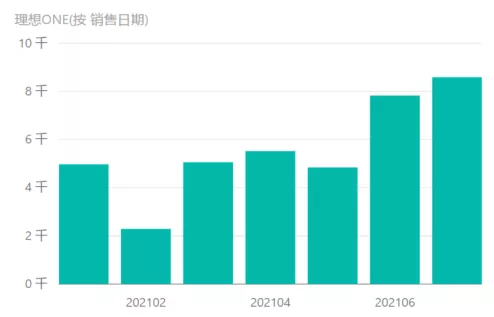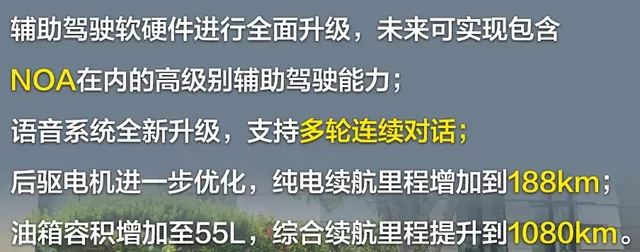In the field of extended range electric vehicles, LI (Li Auto) stands out from the crowd. According to sales data, in July, LI ONE delivered 8,589 units, an increase of 251.3% year-on-year and 11.4% month-on-month. In the first seven months of 2021, LI ONE’s total delivery reached 38,743 units. Currently, there are two types of plug-in hybrid electric vehicles (PHEVs) in the market that do not rely on license plate policies: extended-range electric vehicles (EREVs) and DMi PHEVs. The selling point of EREVs is the combination of the experience of pure electric vehicles with the use of petrol to generate electricity. DMi PHEVs, on the other hand, are more fuel-efficient and have better acceleration than conventional hybrids.

Advantages of Extended Range Electric Vehicles
LI ONE has exceeded many people’s expectations in several aspects:
-
Spacious: While providing enough space, it combines the experience of pure electric vehicles and the ability to generate electricity online using petrol. Although the engine has received criticism from industry experts, users are more concerned about whether the engine directly drives the vehicle, which is the user perspective that distinguishes hybrid and extended range electric vehicles and minimizes the impact of imperfect engines on the vehicle.
-
Sufficient range: According to current promotions, one of the main selling points of LI ONE is that it can cover a further range than pure electric vehicles of the same size. Pure electric vehicles are limited by their range and charging settings and are only suitable for use within cities. In other words, large pure electric battery electric vehicles (BEVs) are often designed as the second family car, while potential customers of EREVs with specific vehicle requirements can meet commuting and family needs with just one car. For consumers who do not understand charging facilities, the differences between BEV and EREV are still significant, especially when it comes to finding charging facilities during long-distance travel.
-
User experience: I have personal experience in this regard. Once the range reaches 200 kilometers or more, consumers are more willing to use it as a pure electric vehicle, and they may even try to use fast charging. However, for plug-in hybrids with a range under 80 kilometers, consumers still need to charge the battery every day. In terms of the efficiency of a single charge, charging a battery with a capacity of more than 35 kWh feels much better than charging a 10 kWh battery. The experience of needing to charge every day is not friendly, and battery performance will also decrease with the number of charges.
(I) LI ONE vs. NIO ES8When comparing the two larger-sized models, the Ideal ONE and the ES8, it is clear to see the differences in selling points, as shown in the sales comparison chart below. While there is not much difference between the two new energy models in Beijing and Shanghai, this difference becomes more apparent in other areas where there is an inadequate supply of charging and replacement facilities. The price of the 100 kWh ES8 is relatively high, and it is difficult for its overall range and availability to catch up with the Ideal ONE, indicating that consumers care about this issue.
To illustrate this difference clearly, the following two charts may be more effective.
Looking at the distribution of cities, this difference becomes even more apparent. The Ideal ONE’s product sales are spread out over a wide range of cities, breaking through the distribution scope of traditional pure electric vehicles, and approaching the distribution pattern of fuel vehicles.
This is indeed where the Ideal ONE differs from the pure electric market – through its extended-range capability, it effectively competes with high-spending areas and fossil-fuel vehicles, challenging conventional models through its vehicle system, autonomous driving features, and sales models.
The selling point of the extended-range electric vehicle is to enable users to use the vehicle for long-distance trips, without relying on charging infrastructure or needing to refuel as often as a traditional gasoline-powered vehicle. This additional fuel system can provide consumers with greater freedom in everyday use, and give them the confidence of a backup fuel supply for longer trips. From a business model perspective:# Electric Drive Mode
In this mode, the vehicle is fully powered by the electric motor with a range of over 180 km, covering daily commutes. It’s a pure electric mode that allows consumers to consider giving up their traditional gasoline vehicles.
Extended Range Mode
In this mode, the engine runs to produce the electricity required for driving, which is useful when there’s no charging facility available or on long-distance trips. This distinguishes it from traditional electric cars.

Conclusion
In my opinion, the initial hybrid models with 50 km range misled many OEM manufacturers to think that such a range was sufficient for consumers. However, in practice, this range is very awkward, as it requires more charging times. Moreover, due to significant differences in acceleration, NVH, and other aspects of pure electric mode and hybrid mode, consumers prefer pure electric mode, leading to charging compulsions. Increasing battery capacity by 20 kWh, which costs about 15,000 yuan, can bring a significant difference in experience. Subsequently, we can observe the actual sales of SF5 and the Voyah extended-range models supported by Huawei to see if they can also make a breakthrough.
This article is a translation by ChatGPT of a Chinese report from 42HOW. If you have any questions about it, please email bd@42how.com.